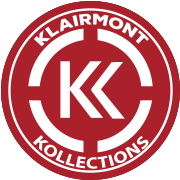Driving Forces: 5 African American Pioneers in Automotive History

In the history of automobiles, the significant contributions of African American figures are often overlooked. In this post, we’ll highlight five individuals who played pivotal roles in reshaping the automotive industry. From inventors to business leaders, these unsung heroes navigated challenges, defied stereotypes, and accelerated change.
Join us as we shift gears and pay homage to the trailblazers who defied stereotypes, broke barriers, and fueled the engine of progress in the world of cars.
Garrett Morgan
Invented the three-position traffic signal
Born in 1877, Garrett Morgan was a notable inventor who held several patents. The one we’re most interested in for this blog post is the three-position traffic signal.
The traffic signal was created by Morgan when he was 46.
In 1923, Morgan saw a carriage collision at a problematic intersection. This inspired him to invent a traffic signal with a warning light to alert drivers that they would need to stop.
Morgan acquired patents for his traffic signal in the United States, Britain, and Canada. But he sold the rights to General Electric for $40,000.
C.R. Patterson
Founded a company that would become the first black-owned automobile manufacturer
Charles Richard Patterson, or C.R. Patterson, was born into slavery in 1833. In the 1850s he fled to Ohio with his loved ones and established himself as a blacksmith. He then established himself as a foreman, partnering with a white carriage manufacturer and developing a reputation for overseeing the production of high-quality products.
Despite the manufacturing company’s success, it saw stock prices plummet during the Panic of 1893. Patterson used the opportunity to buy out the company’s shares and become the sole proprietor of the company. This move made his company the first black-owned automobile manufacturer.
Patterson renamed the company C.R. Patterson and Sons, and ran a successful business producing 28 different horse-drawn carriage styles and approximately 500 horse-drawn carriages per year.
Following his death in 1920, Patteron’s son, Frederick Douglas Patterson, inherited the business. In 1915 he produced the company’s first automobile, becoming the first and only Black owner and operator of an automobile company.
Charlie Wiggins
Broke NASCAR’s color barrier
Born in Indiana in 1897, Charlie Wiggins got his start in the automotive industry as a mechanic’s assistant at an auto repair shop. When the U.S. draft for WWI was opened and most shop employees were called to war, Wiggins was promoted to managing the shop floor.
Wiggins married and moved to Indianapolis, where he found work at an auto body repair shop downtown that he later purchased. The Indianapolis 500 was a new – but popular – event around the time that Wiggins’ shop was growing. In 1920 he designed his own “Wiggins’ special” car with the hopes of participating. Because he was Black, his application was rejected.
Still determined to race, Wiggins joined the Colored Speedway Association for Black race car drivers in the Midwest. The success of the association led to the creation of its own race, named “The Gold and Glory Sweepstakes”. The event lasted ran from 1924 – 1936, and Wiggins was crowned champion four times driving cars he built himself.
Additionally, Wiggins helped engineer the winning car for the 1934 Indianapolis 500 – though he was not allowed to stand in Victory Lane with his fellow crewmates.
McKinley Thompson Jr.
Ford’s first Black automobile designer
McKinley Thompson Jr. was born in 1922 in Queens, New York. He always had an interest in cars, but it wasn’t until 1956, at the age of 34, that he found a career in them.
In 1935, Thompson applied to a scholarship competition for the Art Center College of Design that was hosted by Motor Trend Magazine. He won the competition and became the first African American to attend the school, graduating in 1956.
After graduating, Thompson was hired by Ford Motor Company into the “Advanced Studio”. Here, Thompson helped develop numerous automotive concepts – making him Ford’s first Black automobile designer.
Notable examples of cars that Thompson worked on designs for include: the Ford Gyron, the Ford Bronco, the Ford Warrior (which was never manufactured), and the Cougar II (which was never manufactured).
Homer B. Roberts
First black car dealer
Born in 1888, Homer D. Roberts was a veteran of both world wars, a businessman, and the nation’s first African American car dealer.
Roberts first gained attraction to his business by placing ads in the local paper, and was so successful in his efforts that by the end of 1919 he had negotiated over 60 car sales exclusively for African-American buyers.
With Roberts’ success at capturing the African-American marker, many small auto manufacturers entered into sales agreements with him. Companies like Hupmobile, Rickenbacker, Whippet and Marmon saw potential in the market and also backed his business. This landed Roberts with franchises by both Hupmobile and Rickenbacker.
By 1925, Robers dealership, Roberts Co. Motor Mart was actually ranked third in the United States for its sales of Rickenbackers.
By 1928, Roberts had sold over $2 million worth of automobiles (mostly to African-American drivers).
- Biography.com Editors. 2021. “Garrett Morgan – Inventions, Traffic Light & Gas Mask.” Biography. June 3, 2021. https://www.biography.com/inventors/garrett-morgan.
- “Petersen Archive: C.R. Patterson & Sons – the First Black Owned Car Company.” 2022. Petersen Automotive Museum. September 2, 2022. https://www.petersen.org/blog/c-r-patterson-company.
- “» Charlie Wiggins | Automotive Hall of Fame.” n.d. Www.automotivehalloffame.org. Accessed February 8, 2024. https://www.automotivehalloffame.org/honoree/charlie-wiggins/.
- “McKinley Thompson Jr.” 2023. Wikipedia. September 27, 2023. https://en.wikipedia.org/wiki/McKinley_Thompson_Jr..
- “Today in Our History – August 31, 1921 – Homer B. Roberts – Opens the First Automotive Retail Car Dealership by a Black Man in Kansas City.” n.d. Www.linkedin.com. Accessed February 8, 2024. https://www.linkedin.com/pulse/today-our-history-august-31-1921-homer-b-roberts-opens-hardison/.




